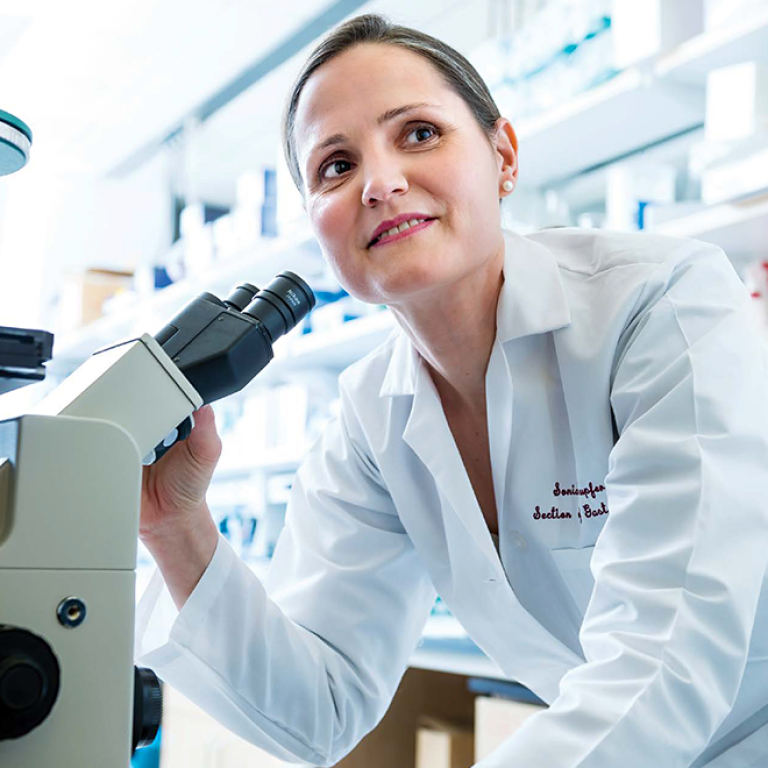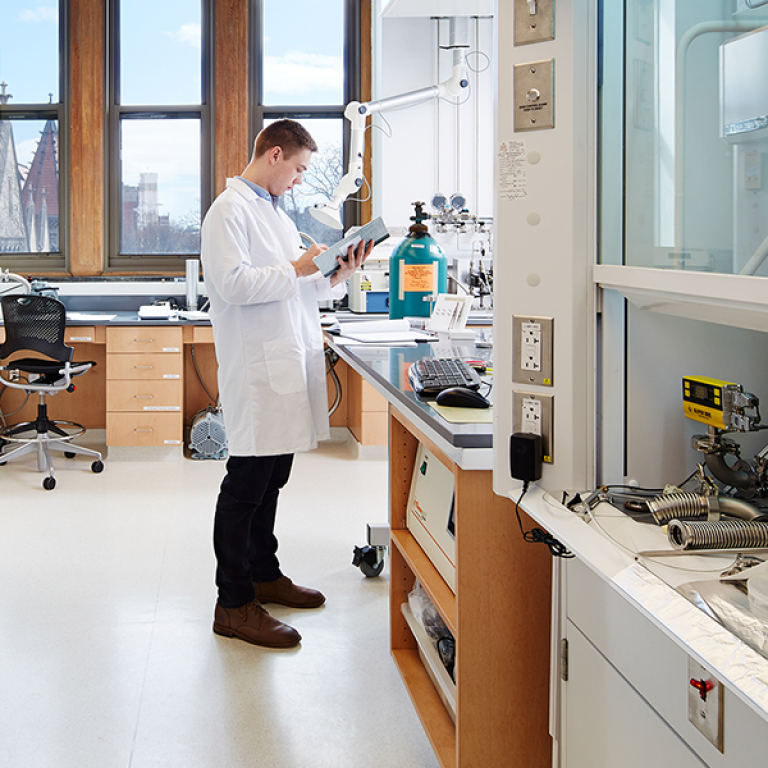Metabolomics is the field of biomedical research that studies metabolites produced by cells, including amino acids, lipids, carbohydrates, and more. Over the past several decades, researchers at the University of Chicago and elsewhere have begun to grasp how much characterizing these metabolites and measuring their levels can tell us about how biological systems respond to genetic differences, disease, or their environment.
Anticipating that faculty from different fields of investigation will be interested in defining metabolic profiles under different experimental and clinical circumstances, the Biological Sciences Division has invested in two distinct, but overlapping, facilities to conduct metabolomics analysis. The first, led by Eric Pamer, MD, the Donald F. Steiner Professor of Medicine and Director of the Duchossois Family Institute (DFI), specializes in metabolites generated by the microbiome, while the second (still in pilot phase), led by Ray Moellering, PhD, Associate Professor of Chemistry, accommodates all types of basic and applied research.
The Host-Microbe Metabolomics Facility (HMMF) at the DFI helps researchers measure, characterize, and identify the metabolites produced or modified by gut microbes. It’s one of three research platforms maintained by the DFI. The Microbiome Metagenomics Facility provides bacterial genetic sequence analyses on intestinal contents and other samples containing complex microbial populations, and the Symbiotic Bacterial Strain Bank contains more than 2,000 bacterial strains isolated from healthy human donors that have been cultured and characterized for research use. Each of these platforms is also supported by bioinformaticians who provide comprehensive computational data analyses, including genome assembly and annotation, using software to analyze genome sequences and characterize metabolite activity to better understand how commensal bacteria impact human health.
“We know the benefits and detrimental effects we derive from the microbiome are mediated by metabolites,” Pamer said. “They interact with our cells. They’re absorbed and circulate in the bloodstream. Some of them don’t do anything, but others do some pretty interesting things like stimulate the immune system or reduce inflammatory responses. In order to exploit these potential benefits, we need to be able to measure the metabolites, and that’s what metabolomics is all about.”
Moellering, a chemical biologist and proteomics expert, is leading the second effort in collaboration Kunle Odunsi, MD, PhD, the AbbVie Foundation Distinguished Service Professor of Obstetrics and Gynecology, Director of the Comprehensive Cancer Center, and Dean for Oncology, and Jing Chen, PhD, the Janet Davison Rowley Distinguished Service Professor of Medicine and Director of the Cancer Metabolomics Research Center. They are implementing metabolomics and proteomics capabilities to enhance cancer research and therapeutics. This new facility will also provide services and targeted research and development for all types of basic and applied research to foster interdisciplinary collaborations.



